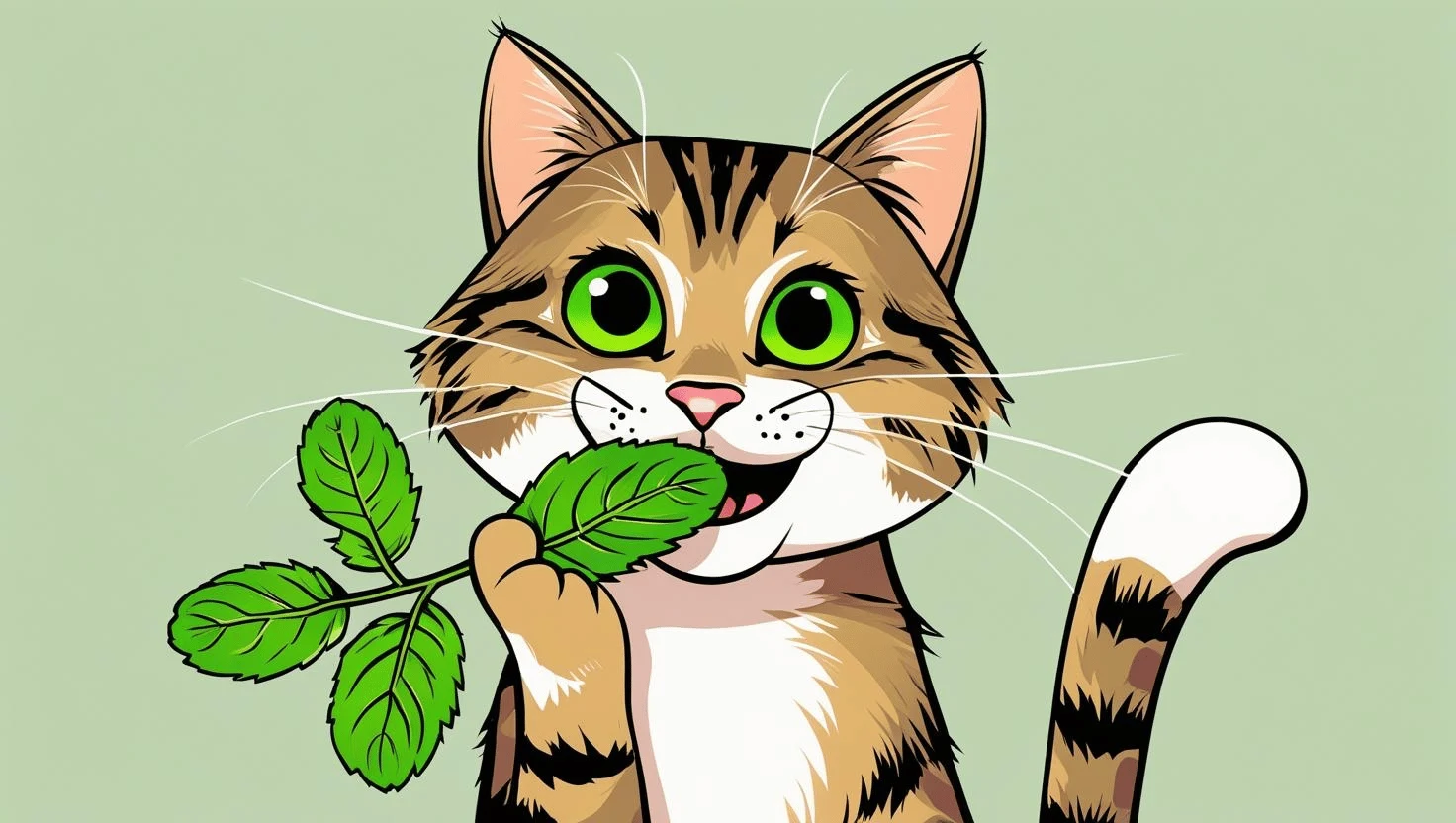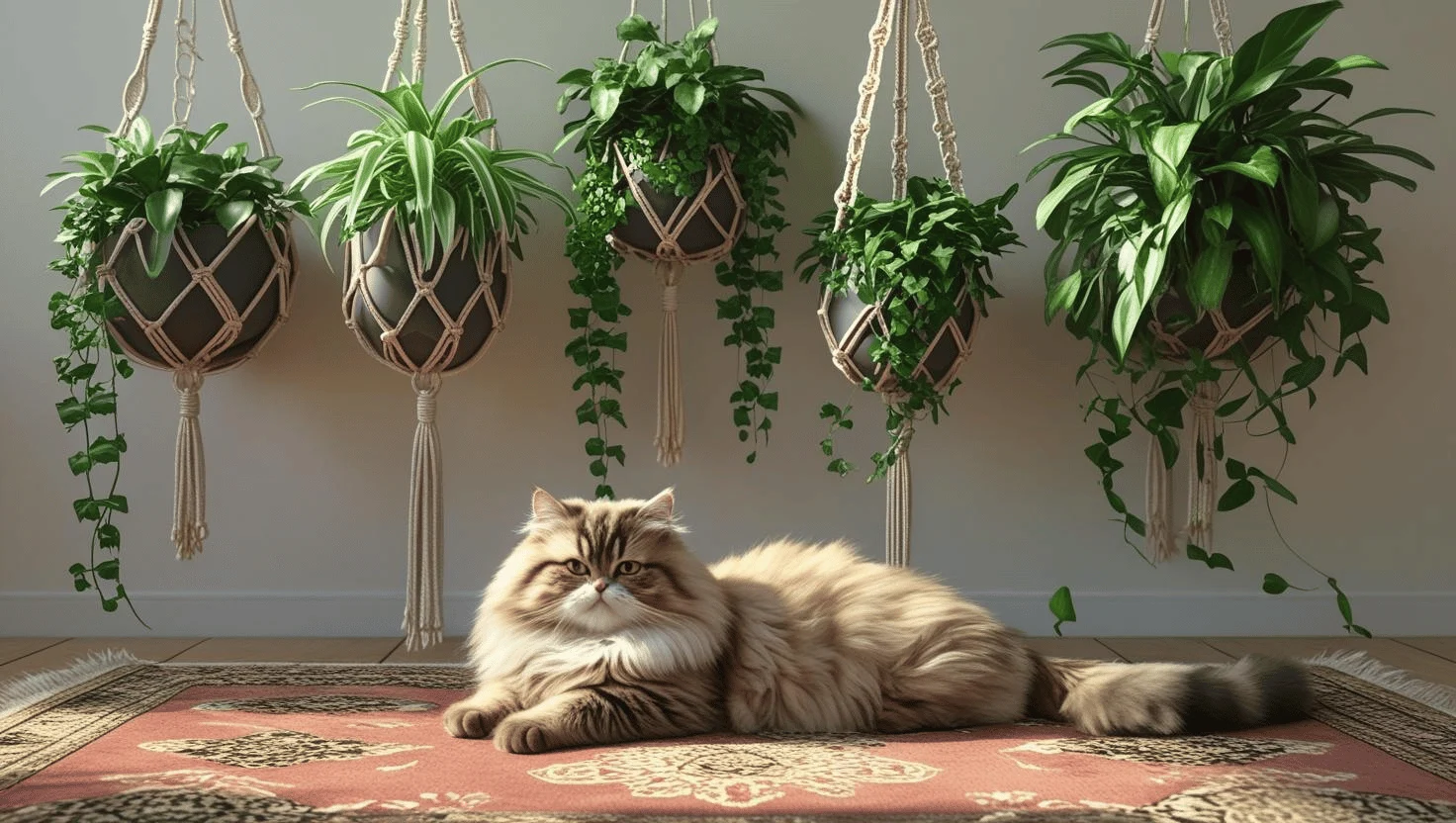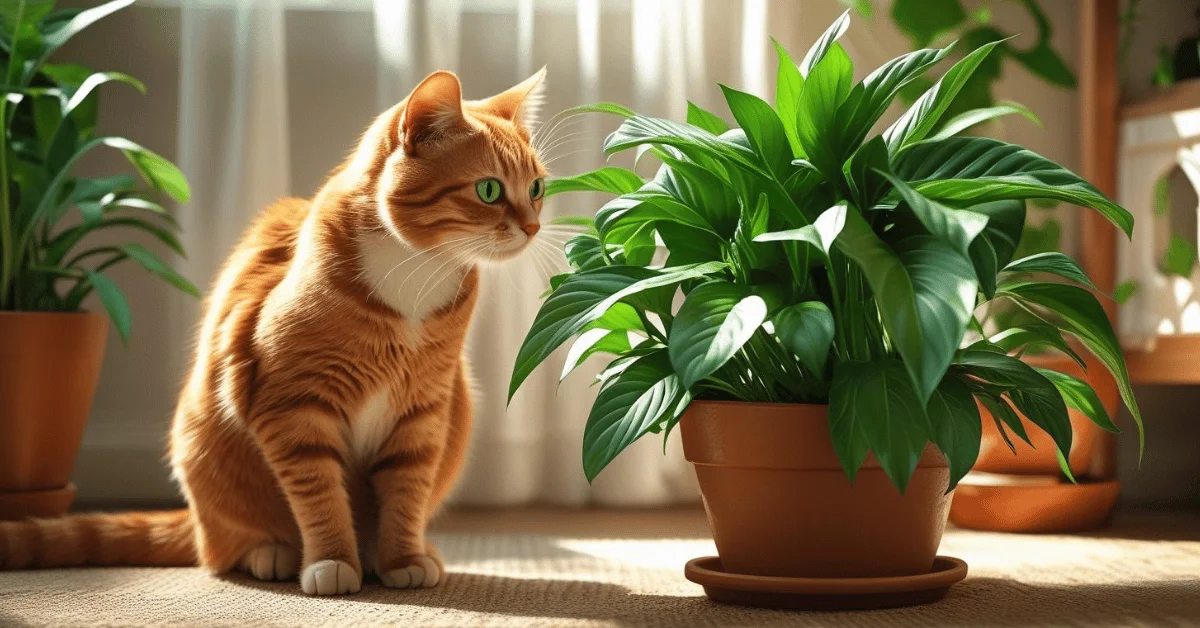If you’re both a cat lover and a plant enthusiast, you know the struggle of balancing a lush indoor garden with your pet’s safety. Cats are curious creatures, often nibbling on leaves or batting at dangling foliage.
What Is a Prayer Plant?
The prayer plant, known scientifically as Maranta leuconeura, gets its name from its unique behaviour—its leaves fold upward at night, resembling praying hands.
Popular Features of Prayer Plants
- Striking patterned leaves in shades of green, red, and cream
- Low-maintenance care, thriving in indirect light
- Known for their “praying” movement throughout the day and night
Why Cat Owners Love Them
Prayer plants are visually appealing and, unlike many common houseplants, are safe for curious cats who might chew on their leaves.
Are Prayer Plants Toxic to Cats?
The ASPCA (American Society for the Prevention of Cruelty to Animals) lists prayer plants as non-toxic to cats and dogs. This means if your cat nibbles on a leaf, it won’t cause poisoning, unlike plants such as lilies, philodendrons, or peace lilies.
What Happens If Cats Chew Prayer Plants?
- Your cat may experience mild digestive upset if they chew too much.
- Serious toxicity is not a concern, making prayer plants one of the safest decorative plants for pet households.
Why Cats Chew on Houseplants

Understanding why cats are drawn to greenery helps reduce unwanted chewing.
Natural Instincts at Play
Cats are obligate carnivores, but they often chew plants out of curiosity, boredom, or to help with digestion.
Stress and Environmental Enrichment
Some cats turn to plants when they lack stimulation. Offering toys, climbing trees, and safe chewing alternatives can reduce their interest in houseplants.
Symptoms of Toxic Plant Ingestion in Cats
While prayer plants are safe, it’s still useful to know the warning signs of poisoning in case your cat encounters a toxic plant.
Common Symptoms Include:
- Drooling or foaming at the mouth
- Vomiting or diarrhea
- Lethargy or weakness
- Loss of appetite
If you see these symptoms and suspect your cat has eaten a toxic plant, contact your vet immediately.
Safe Alternatives to Toxic Houseplants
If you want a pet-friendly home, there are plenty of safe plant options.
Cat-Safe Houseplants
- Spider Plant (Chlorophytum comosum)
- Areca Palm (Dypsis lutescens)
- Calathea (closely related to prayer plants and non-toxic)
- Bamboo Palm (Chamaedorea seifrizii)
Plants to Avoid
- Lilies (highly toxic, can cause kidney failure)
- Aloe vera (causes vomiting and lethargy)
- Philodendrons and pothos (contain calcium oxalates, harmful if ingested)
Related Posts
- Do Cats Need Other Cats? Key Signs to Watch For
- Do House Cats Need to Be Vaccinated?
- Are Carnations Poisonous to Cats?
- Why Do Cats Cry Like Babies at Night?
How to Create a Cat-Friendly Plant Collection
Instead of constantly worrying about which plants are dangerous, consider building a collection that’s both beautiful and completely safe for pets.
Tips for Pet-Safe Plant Shopping
- Check the ASPCA toxic plants list before buying.
- Stick to pet-friendly plant families like calatheas, marantas, and palms.
- Avoid impulse purchases—many decorative plants are highly toxic.
Combining Design and Safety
Group safe plants in decorative clusters, mix in cat-safe grasses, and hang trailing plants from shelves or baskets to create a lush but pet-proof display.
Tips to Protect Cats From Plant Nibbling

Even safe plants can cause mild stomach irritation if your cat snacks on them too often.
Preventive Measures
- Place plants on high shelves or use hanging planters.
- Provide cat grass or catnip as safe chewing alternatives.
- Use natural deterrents (like citrus sprays) to keep cats away from plants.
Prayer Plants vs. Similar Varieties
Prayer plants are often confused with similar-looking species, so it’s worth knowing which ones are also cat-safe.
Calathea and Stromanthe
Both are part of the Marantaceae family, just like prayer plants, and are also non-toxic to cats. They share the same stunning patterns and folding-leaf behaviour.
Ctenanthe (Never-Never Plant)
Another relative of the prayer plant that is also safe for cats. If you want variety in your indoor jungle, these make excellent additions.
Conclusion: Prayer Plants Are Cat-Friendly
So, are prayer plants toxic to cats? Thankfully, no. Prayer plants are among the safest houseplants you can own, offering beauty without risk to your feline friends. By choosing pet-safe plants, you can enjoy a thriving indoor garden and peace of mind knowing your cat is safe.
For a full list of safe and unsafe plants, visit the ASPCA’s toxic and non-toxic plants database.
Frequently Asked Questions
What happens if my cat eats a prayer plant?
If your cat chews on a prayer plant, there’s no risk of poisoning since prayer plants are non-toxic.
Are prayer plants completely safe for cats?
Yes. According to the ASPCA, prayer plants (Maranta leuconeura) are completely non-toxic to cats and dogs.
Can cats eat prayer plants every day?
While not harmful, it’s not recommended to let cats chew prayer plants daily. Regular chewing may damage your plant and cause minor digestive issues for your cat.
Which plants look like prayer plants but may be toxic?
Prayer plants are part of the Marantaceae family, which includes calathea, stromanthe, and ctenanthe—all non-toxic.


1 thought on “Are Prayer Plants Toxic to Cats? A Safe Houseplant Choice for Pet Owners”